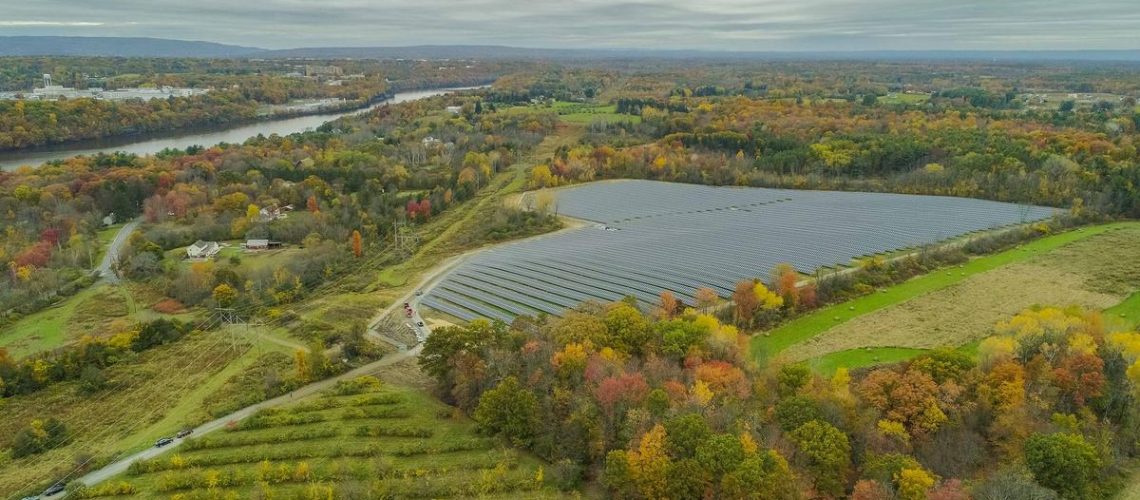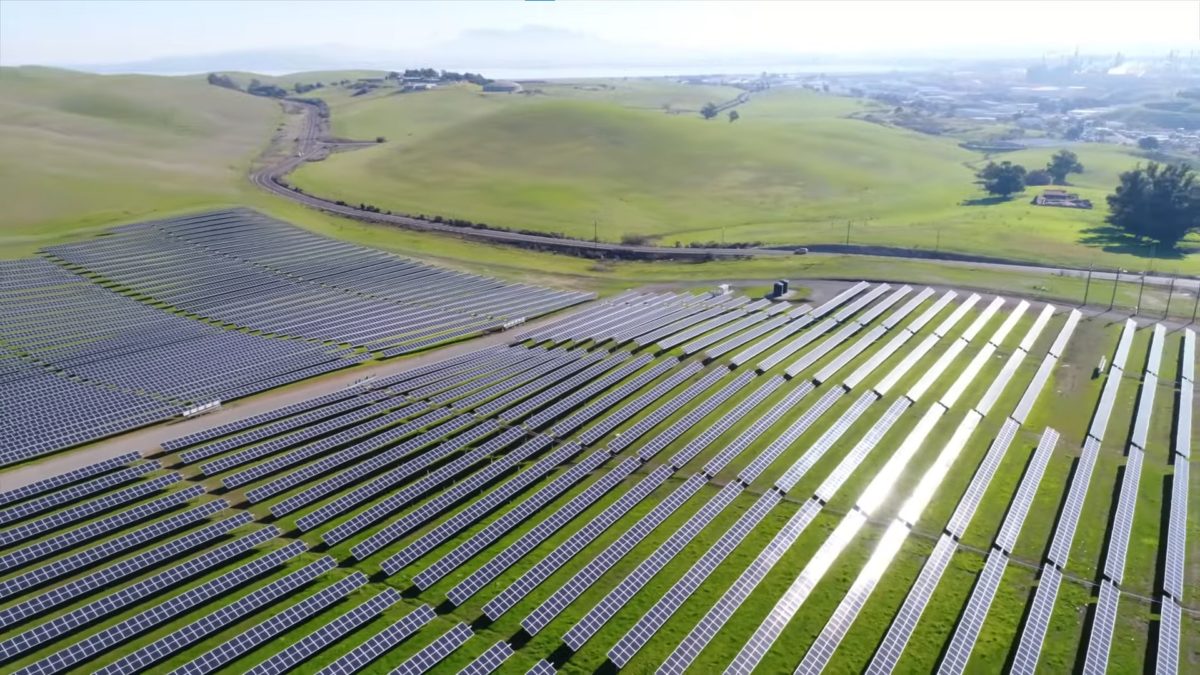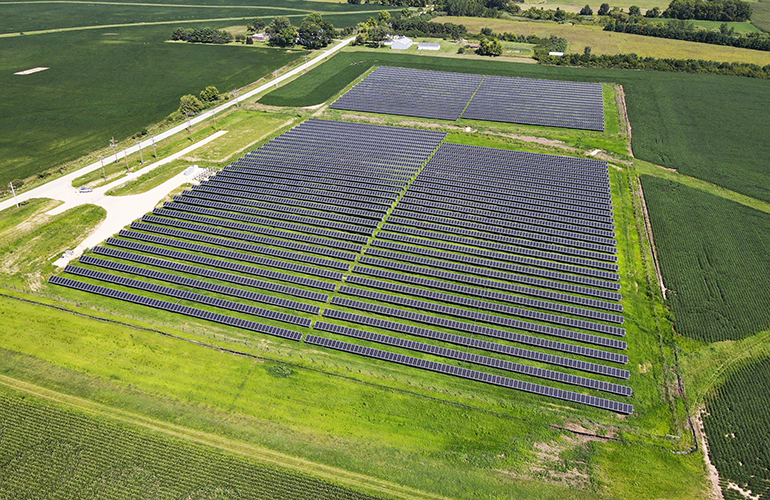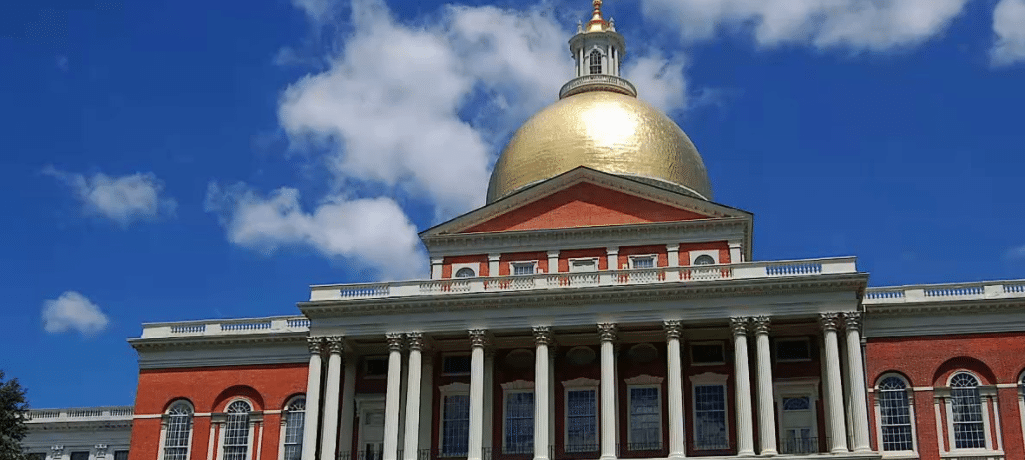Community solar, solar policy development and increasing solar-plus-storage projects were hot topics drawing a record attendance of 550 at the New York Solar Energy Industries Association’s (NYSEIA) 2022 New York Solar Summit.
Held Tuesday in Albany, N.Y. NYSEIA’s executive director Zack Dufresne introduced the daily conference panel session audience with stats that the Empire State continues to lead the nation in community solar development, with a total installation rate of 693 MW of solar assets deployed in 2022.
Doreen Harris, president & chief executive officer of New York Research Development Authority (NYSERDA), the state’s energy development authority, echoed Dufresne’s statements on community solar and distributed generation progress, saying that the state has deployed 4.24 GW of cumulative solar installations, mostly due to the NY-Sun program and 13,000 solar energy jobs created to date.
Initiated in 2011 by then Governor Andrew Cuomo, NY-Sun is the Empire State’s platform for solar incentives and financing to make solar available to all residential homeowners, renters, and commercial businesses.
This week’s Solar Summit came close to the one-year anniversary of NYSERDA’s December 17, 2021 submission of Distributed Solar Roadmap in which the state has set a goal of deploying 10 GW of distributed solar by 2030 pursuant to PSC docket 21-E-0629.
Harris, Dufresne and other agency officials said concluding this year, the state is well on its way to surpassing 50% of its DG mandate in 2023. The NY-Sun program is the framework for $4.4 billion in private investments and state funding to solar development in the upstate New York C&I (2.9 GW target) region, downstate Consolidated Edison service territory (300 MW) and various residential solar blocks (150 MW) around the state.
NYSERDA is submitting a final scoping plan on December 19 that outlines carbon reduction goals outlined for 2023 to 2030 under the state’s Climate Leadership and Community Protection Act (CLCPA), which highlights the state’s net zero goals by 2030. The CLCPA encompasses not only clean energy mandates, but energy efficiency, water, infrastructure and other sustainable improvements.
Harris did not comment yet on whether the state’s agency will increase its 10 GW mandate if pace keeps up with utility-scale and community solar development.
The vibe in mid-December upstate New York with a crisp 15 degree air temperature walking into the Albany Capital Center was just that, crisp and slightly abuzz. pv magazine USA crossed paths with commercial solar developers and lightweight solar racking producers from Buffalo, N.Y., to rooftop storage and solar canopy integrators from Brooklyn, N.Y. including NineDot Energy, Brooklyn Solar Canopy and Ecogy Energy.
Utility-developer partnerships unlock non-wire alternatives
A fireside chat between developer Nexamp and National Grid highlighted the importance of distributed generation partnerships between project development teams and local utilities. In western New York, National Grid was faced with a difficult task of upgrading a few billion dollar capital cost power sub-station in a stranded region of aging 5 kV power stations.
Rather than commit to a multi-year and multi-billion dollar T&D upgrade, the utility partnered with developer Nexamp to unlock the knotted transmission capacity in Watertown, N.Y. with non-wire alternatives, or distributed generation.
In September, the companies announced plans to install an 8.4 MW solar project with 10 Tesla Megapack batteries providing 31 MWh of storage capacity, giving National Grid the ability to call on the system for up to 5.7 MW / 29 MWh up to 25 times per year from the panels or batteries.
Rob Ritchie, director of energy storage for Nexamp, said the utility was looking at a stranded grid asset with Watertown, N.Y., a mid-tier city whose population is just shy of 25,000 residents, located more than 3 miles from the Coffeen utility sub-station in question.
Nexamp found that a non-wire alternative project with solar-plus-storage would save time and money rather than rely on the prior approach of updating a sub-station and countless power lines and poles.
Tom Vaccaro, director of transmission for renewables at National Grid, said the London utility’s U.S. business applied a technique for fixing grid congestion that was used in the UK by National Grid’s Western Power Distribution affiliate.
“Distributed generation is not an alternative, it’s a whole new asset category that does not require a 100-year power line and wires upgrade,” said Vaccaro. “It can no longer be a stranded asset. Now it can be changed every 15 years if needed with non-wire alternative solutions.”
Vaccaro said utility-developer partnerships and regular conversations with independent system operators is the quickest way to rapidly scale up distributed generation resources such as community solar and storage.
Nexamp has eight New York projects with approximately 80 MWh of power capacity, and the company recently announced it would build a Hawaiian community solar portfolio for Hawaiian Electric to provide community solar to local residents.
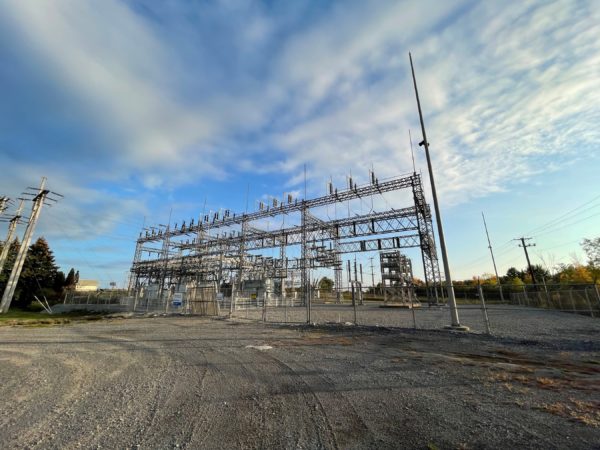
Community solar and energy equity
NYSERDA’s president Doreen Harris said while it should come as no surprise that New York continues to rank number one in overall community solar output, the state’s agencies have seen 1.6 GW of community solar generation made available to low-to-moderate (LMI) income households and building owners, previously an underserved demographic by energy standards.
Harris and other state legislators argued that the NY-Sun program in effect for over a decade and tools such as the NY Solar Mapping toolkit and website have made solar an easy addition to the state’s carbon emissions reduction goals.
Austin Perea, manager of New York policy and market development at retail energy provider Arcadia, said New York has deployed about 1.4 GW to 1.6 GW of community solar projects, while Arcadia itself provides power from about 500 MW of solar assets in New York.
“Nowhere else but New York does community solar exist as the centerpiece of climate change reduction goals,” Perea said during an afternoon panel titled, Community Solar – Energy Equity and Environmental Justice.
Noah Ginsburg, director of SolarOne, a New York City non-profit group providing clean energy training solutions, said an imbalance still exists between utilities and ratepayers in the state for community solar access to affordable energy.
Distributed generation and community solar should have set metrics between ratepayers and the utility, though Ginsburg said, “utilities are bad actors right now,” taking community solar generation and selling it at their higher retail energy rate.
While the Inflation Reduction Act allows for non-profits to participate in distributed generation, federal and state programs need to include an adder to deploy more private investments to enable more low-to-moderate income household participation in New York community solar, Ginsburg said.
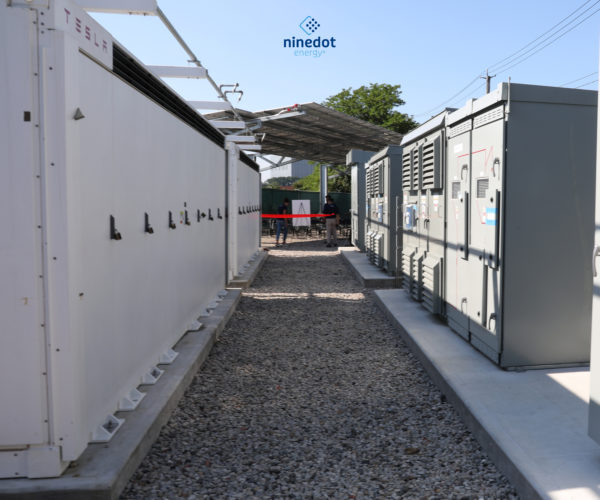
Solar-plus-storage
Looking to 2023, much end of year buzz at the New York Solar Summit centered around the Energy Storage Roadmap, which is the NYSERDA’s revised framework of setting a multi-year target of deploying 6 GW of energy storage assets, which is double that of Governor Kathy Hochul’s initial 3 GW storage target.
Jon Carbajal, director of product development for NineDot Energy, said the ambitious 10 GW of solar and 6 GW of energy storage statewide goals are certainly attainable. The majority of new solar capacity will come from the upstate and Hudson Valley region with abundant land, and energy storage can be deployed on smaller tracts of land including in metropolitan New York City region.
NineDot’s director said that urban project developers have been able to deploy 5 MW worth of Tesla Megapack storage systems in 10,000 square feet, or 0.25 acre land plots in and around the New York City area. That compares to an approximate 25 acres needed to install a comparable 5 MW solar array at an upstate community solar project, he said.
Developers NineDot, Urban Energy and Ecogy Energy have pointed to gains of downstate distributed generation from getting to know local stakeholders such as vacant building and lot owners, non-profit organizations such as churches and local representatives of the Department of Housing and Urban Development.
In Long Island, Bob Boerner, manager of renewable energy for Public Service Enterprise Group – Long Island said thus far about 14% of the Long Island region’s load comes from rooftop solar and storage systems, while the utility has seen no trouble signing up residents in oversubscribed solar and storage blocks across the island.


